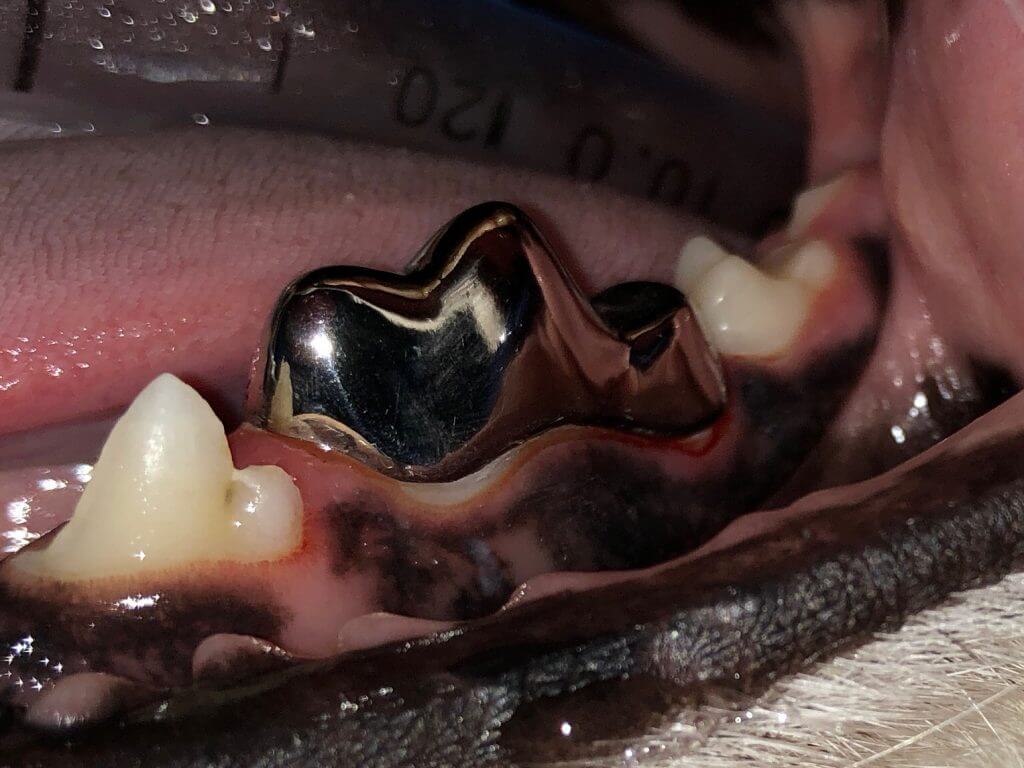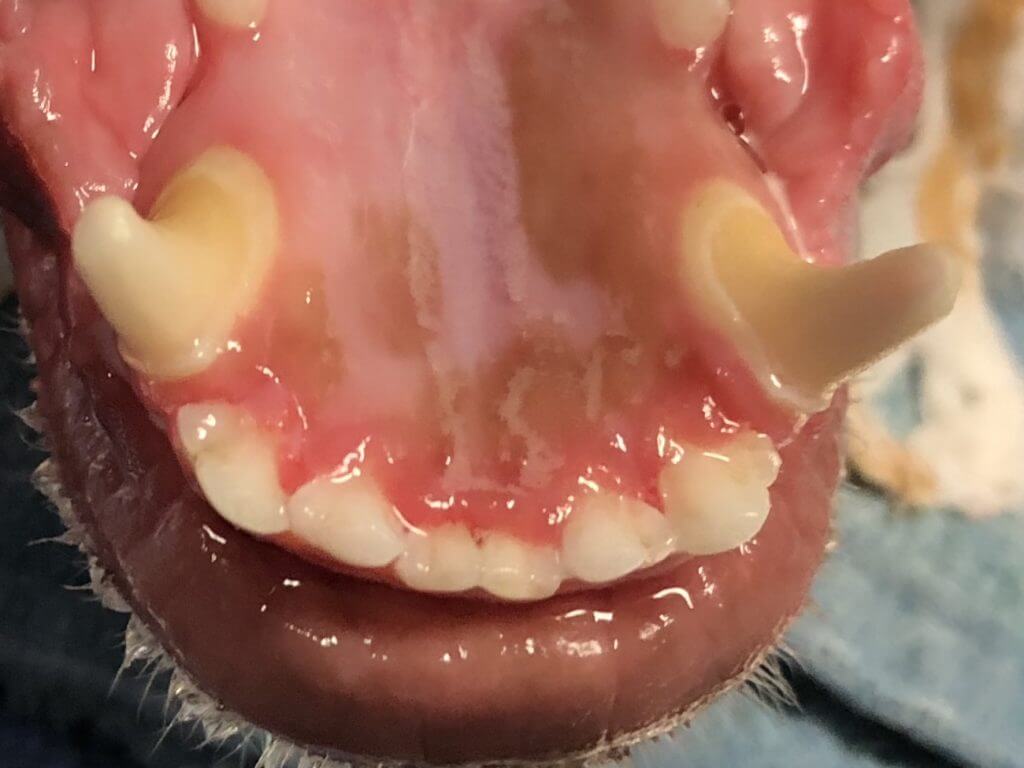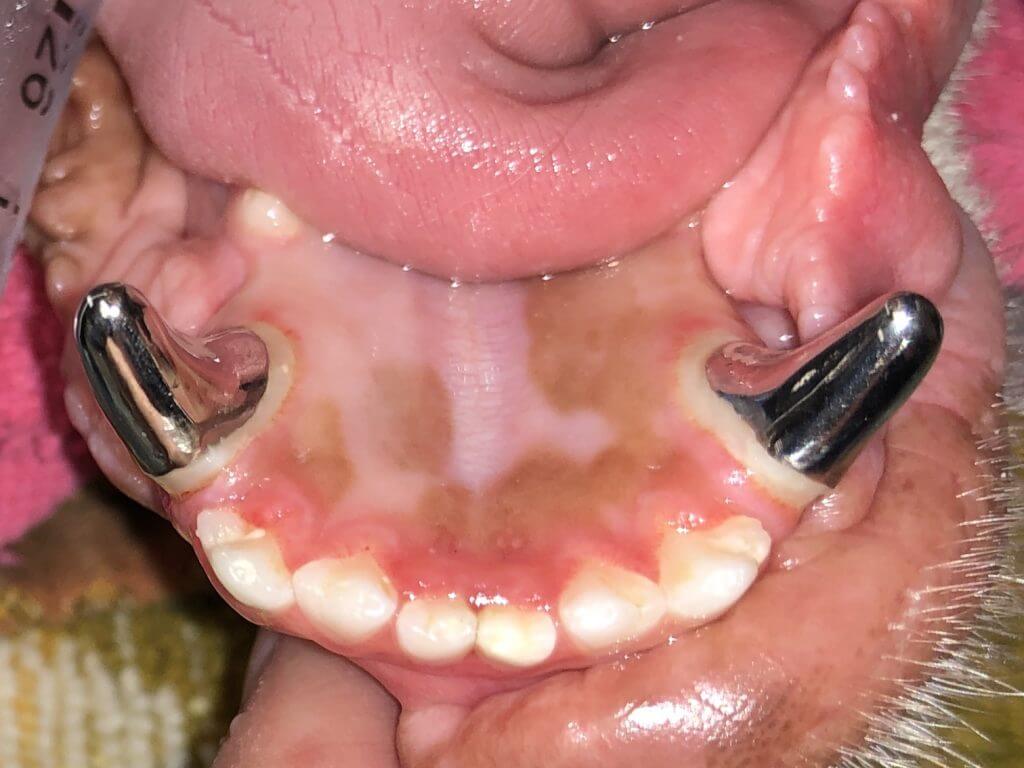As described in a recent post, dental conditions are often hidden and painful. The following posts are going to help describe conditions that pets can get as well as treatment. Many people I talk with are surprised how we can help pets with dental conditions and save teeth whenever possible.

Research shows that fractured and/or endodontically (having had root canal therapy) treated teeth are inherently more likely to break. One paper showed those treated teeth without crowns were up to six times more likely to break as compared to endodontically treated teeth with full metal crowns. The upper 4th premolar (shown above) is the tooth that is the weakest without a crown. Although full metal crowns are not required after a tooth receives root canal therapy, many choose to protect their investment returning the tooth to its natural original strength or stronger.
Due to the physics of chewing in dogs and the fact that we cannot simply tell them not to chew on hard objects, the crown must be made of strong materials. Our office uses titanium alloy crowns for patients. Some veterinary dentists are trying zirconium (very durable and closer to tooth color) crowns. Porcelain crowns do not seem to last in most dogs.

To allow the crown to fit, typically 0.7-1.2 mm of tooth is taken away with varying sizes and grits of diamond burs. The enamel of dogs is 0.1-0.6 mm thick meaning that only dogs that have sufficient dentin (usually by age 2) are good candidates for crowns. Additionally as long as there is sufficient tooth height in proportion to its diameter, broken teeth or discolored teeth having received standard or non-standard root canal therapy are suitable for crowns.
Bones, antlers, hooves and anything without flex can break teeth. The FDA even put out a warning to this effect. These are the primary causes for tooth breakage, root canal therapy, and subsequent full metal crowns. Appropriate chews and toys are any object with flex. If your fingernail can indent the object, it’s okay. It’s even been reported for ice cubes to break teeth. After root canal therapy, it is important to take away all items that can break this treated tooth as well as others. As many owners are surprised what their pet finds to chew on, having a full metal crown gives strength and peace of mind should that occur. Continued chewing can still dislodge crowns so removing non flexible chews/toys is still a good idea.
In some cases, chewing is happening on objects such as kennel bars and other items that cannot be taken away. Sometimes living/vital teeth are crowned to repair the damage and wear from kennel bars and/or uncomplicated crown fractures and give added strength for likely continued chewing.


Contact us to learn more about crowns for your pet.
